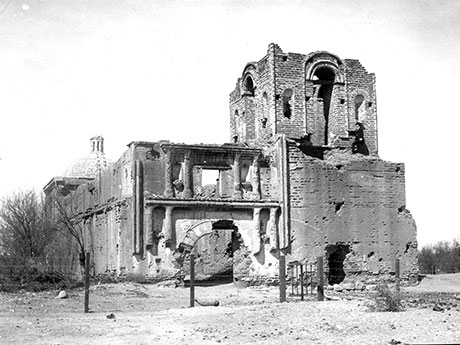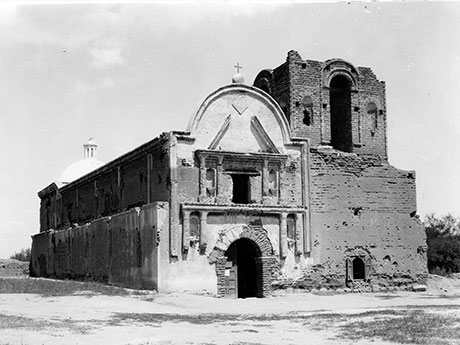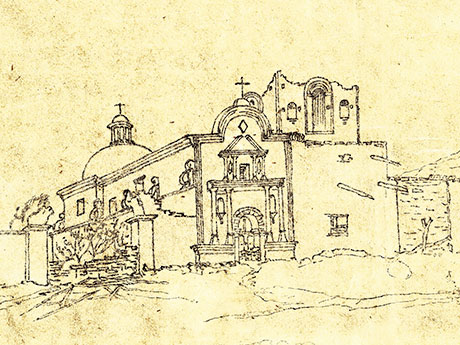 | | 1912 photograph showing the damage wrought by a
large earthquake in 1890 which caused the structural failure of the
pediment. Note the first preservation
efforts in the installation of fencing after the designation of
Tumacácori as a National Monument in 1908. |
|
|
The
Mission San Jose de Tumacácori is one of three Spanish
missions and was the first monumental church structure built
within the Tumacácori National Historic Park, a National Park Service
site.
The current church was built beginning
in 1800 to replace the Jesuit San Cayetano de Tumacácori
across the river within the lands of the O’odham (Pima) Native
Americans and is the primary landmark of significance for the
Tumacácori National Historic Park.
|
|
The
Jesuits were influential in shaping the expansion of New Spain during
the colonial drive of the Spanish empire, thereby establishing missions
throughout the Sonoran Desert (area encompassing both Arizona and the
present day Mexican state of Sonora), California, and Arizona. After
the Jesuits were expelled from the Americas by the Spanish King Carlos
III in 1767, the missions were inherited by the Franciscans. In a
period of general decline from Apache hostility, competing settlers,
lack of support from the Spanish government, discontent within the
converts, and disease, Tumacácori entered a period of general
abandonment beginning in 1848 until the National Park Service initiated
preservation in 1918. Frank Pinkley’s interventions began a tradition
of preservation at Tumacácori that would later guide much of the
philosophy and history of architectural conservation in the Southwest.
|
|
|
 | | 1922 photograph showing restoration efforts, most dramatically seen in
the rebuilding of the façade pediment. |
|
| | The
façade of the mission at Tumacácori can be read as a document in itself
that communicates the development of American preservation philosophy
for almost 100 years. Under the stewardship of Frank “Boss” Pinkley,
conservation methodologies were experimental and would eventually give
rise to the use of traditional building materials and methods as a form
of repair. By the 1940s traditional methods gave way over the next
three decades to the use of synthetic resins and non-traditional
treatments of grouts, water repellents, and consolidants. By
studying the application of these methods in succession, one can gain a
perspective of nearly a century’s worth of preservation thinking
and insight into the development of architectural conservation
and historic preservation in the United States. |
|  | | 1849 journal sketch by H.M.T Powell on his way to California. |
|
|





